Custom Application Development
By: Bryan Reynolds | 01 December, 2025

This article discusses the key strategies and benefits of successful software outsourcing, including models, process, risk mitigation, and current trends for 2025, to help businesses leverage global talent effectively.
Read MoreBy: Bryan Reynolds | 25 November, 2025

This article provides an in-depth guide for executives on choosing ASP.NET for custom software development, emphasizing strategic benefits, technological advantages, and partnering tips.
Read MoreBy: Bryan Reynolds | 21 November, 2025

This comprehensive 2025 guide covers all aspects of mobile app development services, including types, costs, processes, technologies, industry-specific considerations, and how to select the right partner.
Read MoreBy: Bryan Reynolds | 13 November, 2025

This article debunks six widespread myths in software development that cost businesses considerable time and money—from the misconception that adding more people speeds up projects, to the false belief that using the newest technology always grants a competitive edge. Using recent industry data and financial analysis, it offers CTOs and technology leaders a practical, transparent framework for smarter decision-making. The article emphasizes the importance of strategic hiring, quality assurance, realistic budgeting, and disciplined technology selection as keys to building high-performing, cost-efficient software organizations that are set up for long-term success.
Read MoreBy: Bryan Reynolds | 07 November, 2025

This article provides a comprehensive guide for executives on the importance of disciplined software scoping to ensure project success, control costs, and maximize ROI. It covers definitions, processes, methodologies, tools, risks, and strategic benefits of effective scoping.
Read MoreBy: Bryan Reynolds | 05 November, 2025

The article explores perfective maintenance as a proactive strategy for improving software beyond bug fixes, emphasizing its importance for business growth, technical health, and competitive advantage.
Read MoreBy: Bryan Reynolds | 30 October, 2025
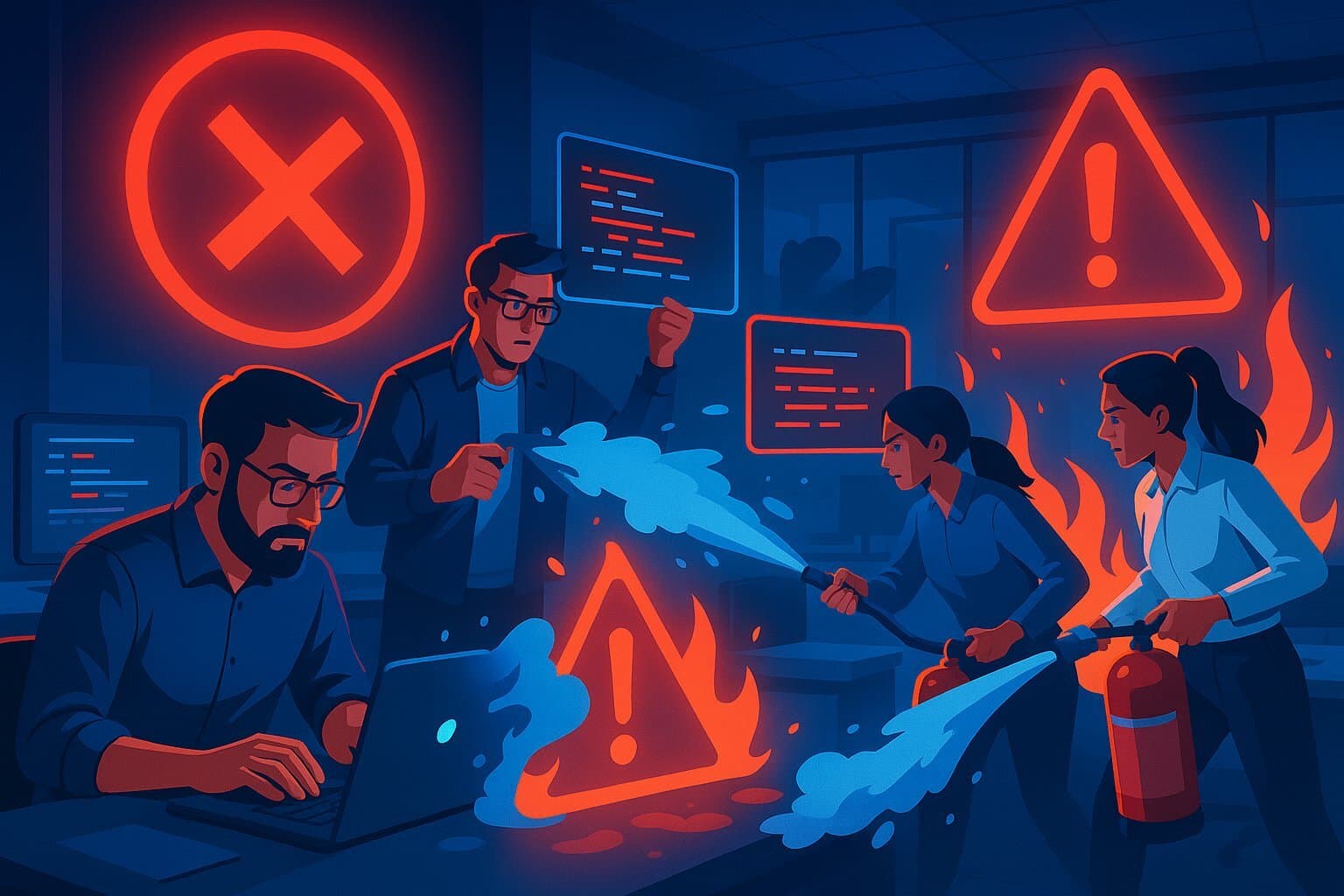
This article explores the concept of corrective maintenance in software development, highlighting its costs, impact on innovation, customer satisfaction, and strategic management.
Read MoreBy: Bryan Reynolds | 29 October, 2025

The Institute of Electrical and Electronics Engineers (IEEE) describes software maintenance as the modification of software after delivery to the user. The reasons for these changes include correcting faults, improving performance, and adapting the software to changes in requirements. All software requires maintenance, even when the software, its operating environment, and its requirements are completely stable. Minimizing maintenance costs becomes more important as the software’s complexity increases since they often exceed the initial cost of developing the software.
Read MoreBy: Bryan Reynolds | 24 October, 2025
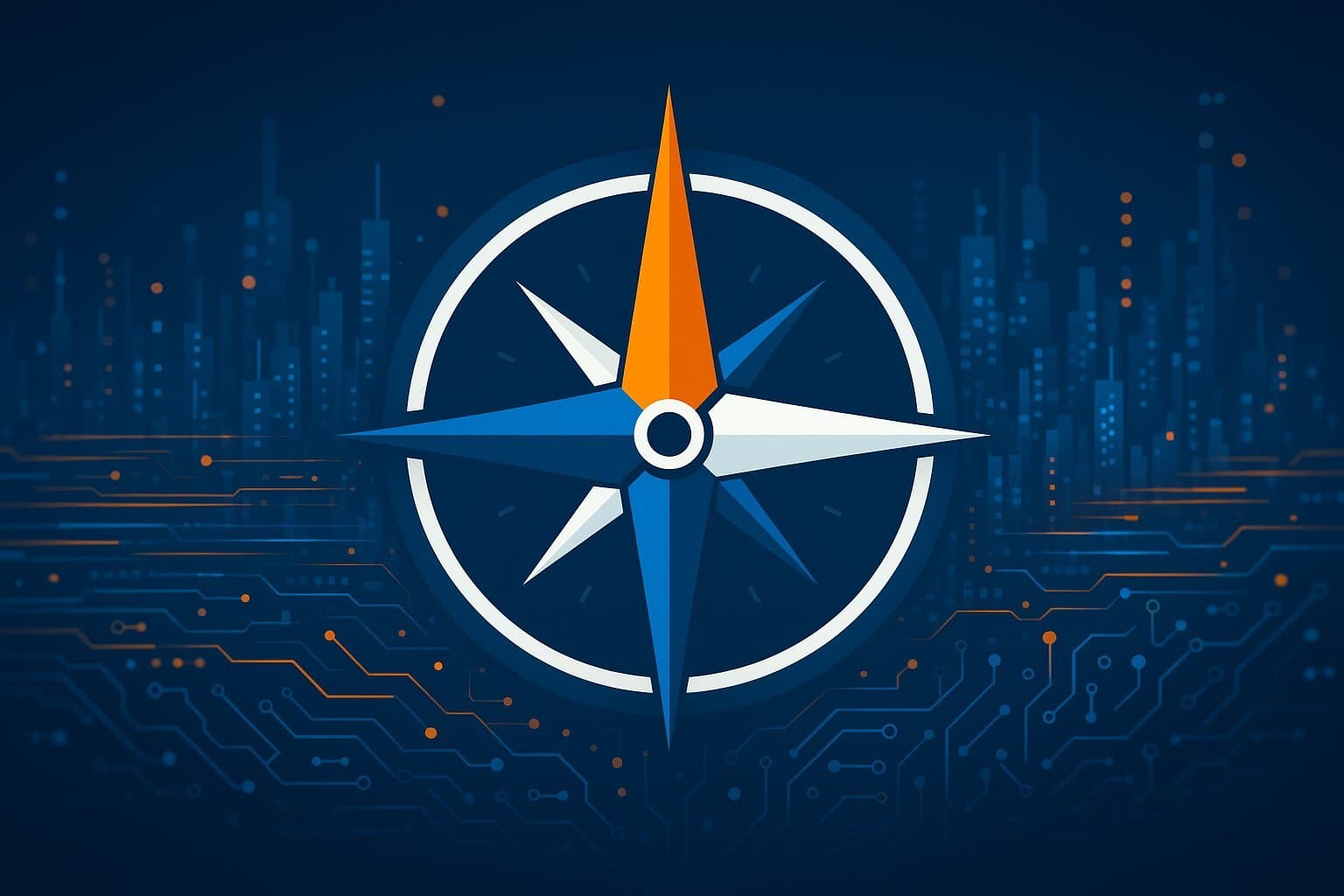
This article presents a practical five-step framework to ensure IT roadmaps are directly aligned with core business goals, addressing the costly and pervasive execution gap that undermines most digital transformation initiatives. It highlights the importance of shifting IT from a cost center to a strategic value creator through collaborative roadmap development, defining business-centric KPIs, justifying investments with ROI, continuous business-focused communication, and agile adaptation. Industry examples—spanning finance, healthcare, gaming, and more—demonstrate the measurable impact of alignment on profitability, agility, and market leadership. The article concludes by introducing Baytech Consulting as a specialized partner for organizations seeking to bridge the strategy-execution gap and maximize ROI from technology investments.
Read MoreBy: Bryan Reynolds | 20 October, 2025

This in-depth guide explores how B2B executives can strategically integrate artificial intelligence into every phase of the software development lifecycle to gain a sustainable competitive advantage. The article maps out the transformation from traditional, linear SDLC models to dynamic, AI-powered workflows, highlighting practical tools, real-world ROI data, and a disciplined framework for success. It dives into AI’s role as a co-creator, not a replacement for human talent, discusses the ROI paradox, outlines key risks and governance strategies, and delivers an actionable four-pillar playbook for AI adoption at scale. With an emphasis on executive leadership, data-driven decision making, and talent transformation, this resource offers a blueprint for organizations leading the shift to AI-native software development.
Read MoreBy: Bryan Reynolds | 17 October, 2025
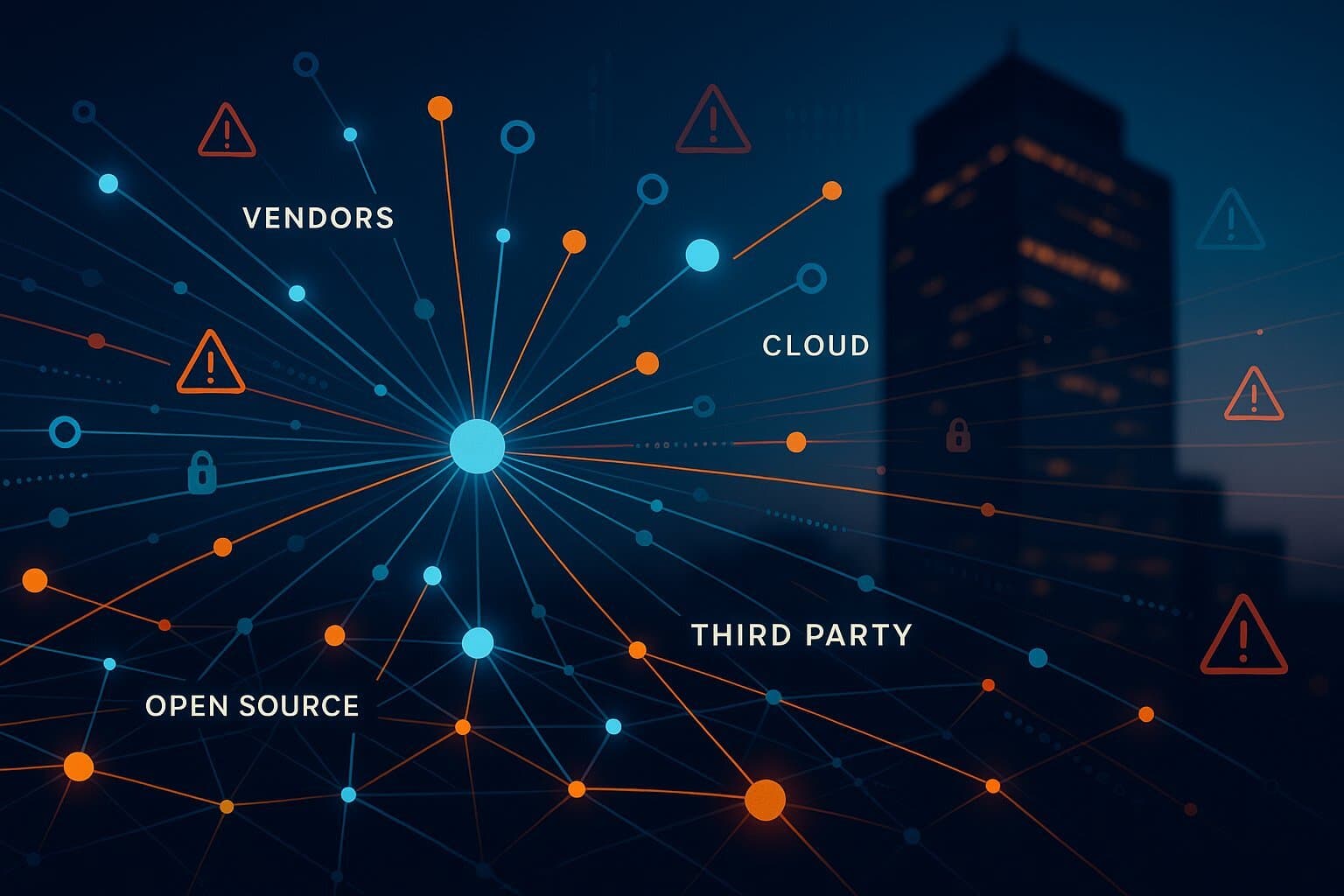
This article explores the escalating cybersecurity risks stemming from third-party vendors and digital supply chains, emphasizing how traditional 'firewall' models are obsolete in a hyper-connected business world. Citing notable breach statistics and financial impacts, it highlights the need for close collaboration between CIO, CFO, and CSCO to implement a lifecycle-based Third-Party Risk Management (TPRM) framework. The article advocates moving beyond reactive compliance towards proactive, evidence-based vendor monitoring and suggests that for mission-critical operations, organizations should consider investing in custom, secure-by-design software to mitigate systemic vulnerabilities, turning risk management into a competitive advantage.
Read MoreBy: Bryan Reynolds | 15 October, 2025
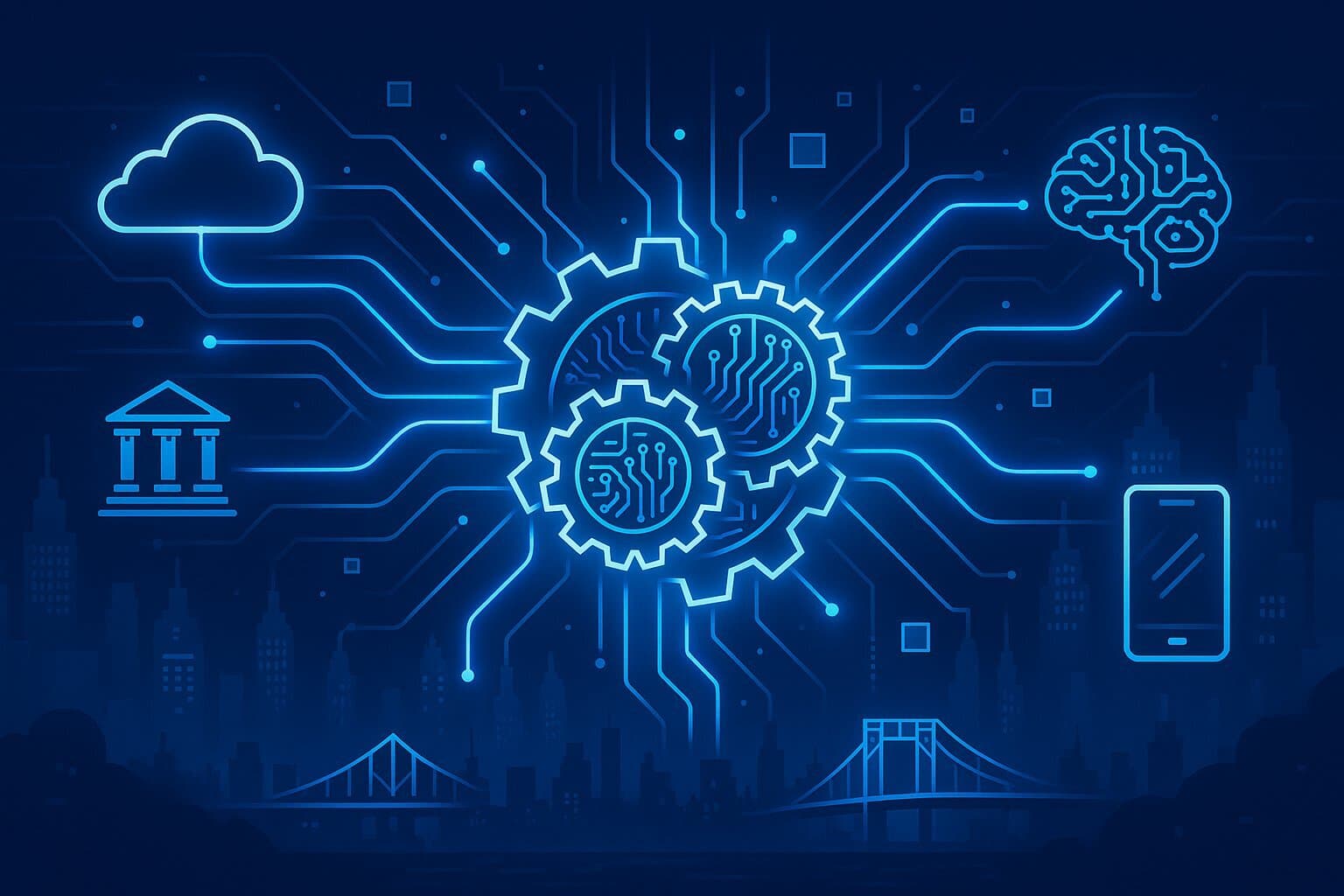
This article provides a comprehensive guide for CTOs and technology leaders on how to design, build, and monetize APIs as strategic products in the rapidly expanding API economy. It explores the paradigm shift from viewing APIs as technical integrations to managing them as valuable product assets, covering essential topics such as the API-as-a-product mindset, API product management, design best practices, technology stacks for scalable API development, governance frameworks, security strategies, and revenue models. The article also highlights future trends like 5G, AI, and Web3, demonstrating how API excellence positions organizations for digital innovation and competitive advantage.
Read MoreBy: Bryan Reynolds | 14 October, 2025

This article explores why reimagining the DevOps lifecycle as the primary security perimeter is essential in the age of AI-powered cyber threats. It highlights the limitations of traditional security models, the increasing sophistication of attacks, and the exponential cost of addressing vulnerabilities late in the SDLC. The article describes the DevSecOps approach—emphasizing Secure by Design, shifting security left, and automating security testing—and provides a practical blueprint for integrating automated security tools into Azure DevOps pipelines. It concludes by outlining the business benefits of mature DevSecOps adoption, including faster delivery, stronger compliance, and reduced risk, and offers concrete next steps for engineering leaders to begin the transformation.
Read MoreBy: Bryan Reynolds | 13 October, 2025

This comprehensive article explores the critical role of rapid prototyping and Minimum Viable Product (MVP) development in enterprise innovation. It demystifies the differences between Proof of Concept (PoC), prototype, and MVP, presenting a data-driven case for using MVPs to de-risk product launches, accelerate time to market, and drive organizational agility. The article outlines a practical five-step blueprint for executing an MVP project, supported by real-world examples from industry giants like Dropbox and Airbnb. It concludes with advice on measuring MVP success through actionable metrics and suggests steps to foster a culture of experimentation and validated learning within organizations.
Read MoreBy: Bryan Reynolds | 12 October, 2025

This article explores the rapid rise of low-code/no-code (LCNC) platforms, their strategic implications for enterprises, and how organizations can leverage a hybrid approach combining LCNC and custom development for maximum agility and innovation.
Read MoreBy: Bryan Reynolds | 11 October, 2025

This article challenges the outdated stereotype of software developers as mere typists, emphasizing that true productivity in software engineering comes from creative problem-solving and systems thinking, not just writing code. Drawing on industry data and expert insights, the article dispels the myth that developer value is measured by keystrokes, illustrating how the majority of a developer's day is spent on collaboration, problem-solving, and navigating systemic blockers. It advocates for a mindset shift among organizations, promoting hiring and management strategies that prioritize critical thinking and adaptability over rote technical skills. The article also outlines actionable steps for developers, managers, and business leaders to foster environments where innovative solutions, rather than feature factories, are the norm.
Read MoreBy: Bryan Reynolds | 10 October, 2025

This article explores the rapid and transformative growth of the custom software development market, revealing why organizations are shifting away from generic, off-the-shelf solutions to build proprietary digital assets that codify their unique competitive advantage. Citing robust market data and future forecasts, it highlights the core drivers behind this revolution—including digital transformation, cloud computing, and the rise of low-code/no-code platforms—while offering a clear financial framework for the 'build vs. buy' decision. The article also examines how high-growth industries are leveraging custom solutions, outlines best practices for successful custom development initiatives, and provides actionable steps for business leaders to start capitalizing on this strategic trend.
Read MoreBy: Bryan Reynolds | 08 October, 2025

.NET vs. Node.js: A Strategic Framework for Backend Technology Selection offers a comprehensive, business-focused comparison of .NET and Node.js for backend development. The article examines their relative strengths in performance, scalability, developer productivity, ecosystem stability, security, and long-term total cost of ownership (TCO). It dispels outdated myths, provides financial modeling templates, compares decision factors such as talent pools and maintainability, and delivers actionable guidance for technology leaders based on enterprise priorities—from rapid prototyping to operational risk management. The conclusion proposes a pragmatic hybrid approach, recommending using each technology where its benefits are maximized.
Read MoreBy: Bryan Reynolds | 07 October, 2025

This article dispels the outdated 'build vs. buy' narrative in enterprise technology architecture, arguing that the most successful organizations adopt a hybrid model that combines best-in-class SaaS solutions for commodity functions with custom-built microservices for differentiated business logic. It explores the pitfalls of all-in monolithic and SaaS architectures, advocates for a composable, API-driven approach that maximizes agility, reduces vendor lock-in, and focuses engineering resources on true competitive advantage. Using a logistics SaaS company as an example, the article presents a playbook for adopting a hybrid strategy and highlights key business benefits such as innovation velocity, strategic flexibility, and optimized total cost of ownership.
Read MoreBy: Bryan Reynolds | 05 October, 2025
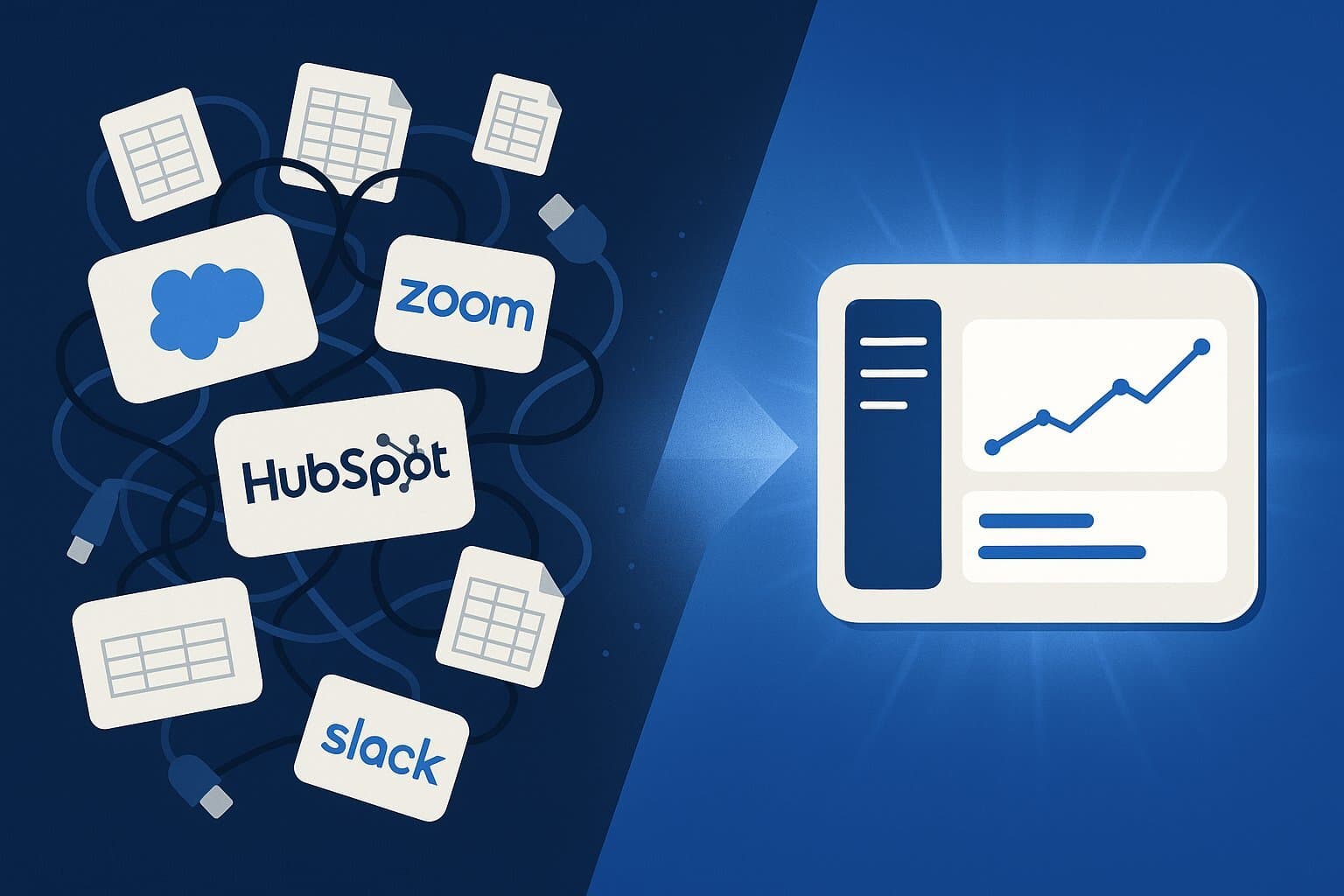
This article explores the strategic inflection point at which businesses should consider building custom software instead of relying on commercial off-the-shelf (COTS) solutions. It outlines five major signs indicating the need for a bespoke solution, such as having unique core processes, the proliferation of spreadsheets and manual workarounds, complex integration challenges, loss of control over data and product roadmap, and uncovering a potential new market opportunity. The article provides a detailed total cost of ownership analysis, quantifies operational inefficiencies, and offers a strategic framework for successful custom software development, emphasizing an MVP-first, agile, and advisory-led approach. It concludes by positioning custom software as a strategic asset, not just a cost center.
Read MoreBy: Bryan Reynolds | 03 October, 2025

This in-depth guide explores the imperative of hyper-personalization for modern businesses, outlining why conventional personalization tactics are failing, the significant ROI and revenue opportunities of 1-to-1 customer experiences, and the essential technology stack required to deliver them at scale. Key topics include building a unified data foundation, leveraging AI and machine learning for predictive insights, activating personalized journeys via marketing automation, and the strategic benefits of developing a custom personalization engine. The article also provides an actionable roadmap for implementation and addresses key organizational considerations to bridge the gap between company capabilities and rising customer expectations.
Read MoreBy: Bryan Reynolds | 02 October, 2025

This article explores the transformative role of voice search and conversational AI in reshaping customer interaction, emphasizing how voice has become a primary human-computer interface across homes, cars, and mobile devices. It highlights the explosive growth of voice-enabled devices, the rapid rise of voice commerce, and the critical importance of Voice Search Optimization (VSO) for brands aiming to remain competitive. The guide outlines a strategic CMO playbook covering conversational content, featured snippets, local search dominance, and technical foundations, then delves into how conversational commerce collapses the sales funnel and boosts ROI. Ultimately, it offers actionable steps for executives to audit their 'voice readiness,' evaluate build-vs-partner decisions, and position their organizations as leaders in the voice-first era.
Read MoreBy: Bryan Reynolds | 30 September, 2025

This article exposes the costly myth behind 'quick and easy' off-the-shelf (COTS) software solutions, arguing that the sticker price represents only a fraction of the true Total Cost of Ownership (TCO). It delves into the hidden expenses of implementation, integration, customization, training, productivity loss, and ongoing vendor lock-in that frequently cause projects to vastly overshoot original budgets. Supported by industry studies and practical frameworks, the article challenges business leaders to adopt rigorous TCO analysis and strategic thinking when selecting software, often revealing that custom solutions offer superior long-term value, risk mitigation, and alignment with business objectives.
Read MoreBy: Bryan Reynolds | 29 September, 2025

This article explores the strategic importance of the build versus buy decision in enterprise software, introducing a comprehensive 6-Factor Decision Matrix to help leaders make data-backed choices that align with long-term business goals, emphasizing the shift from cost considerations to strategic value.
Read MoreBy: Bryan Reynolds | 28 September, 2025

This article advocates shifting from the traditional 'Build vs. Buy' decision paradigm to a strategic 'What to Differentiate' framework, emphasizing the importance of classifying capabilities as commodities or differentiators to create sustained competitive advantages through a 'Bounded Buy' strategy. It provides practical tools, case studies, financial analysis, and partnerships to implement this approach effectively.
Read MoreBy: Bryan Reynolds | 26 September, 2025

This article examines the evolving landscape of remote and hybrid work in 2025, highlighting the core paradox facing organizations: while remote employees are among the most engaged, they also report higher stress and loneliness. Through an analysis of current workforce data and case studies, the article breaks down how modern leaders must balance productivity, culture, and security to create high-performing, resilient organizations. It provides actionable frameworks and checklists, emphasizing the need for intentional remote culture-building, modern outcome-oriented productivity management, and the adoption of Zero Trust security principles—showcased via real-world practices from Baytech Consulting.
Read MoreBy: Bryan Reynolds | 24 September, 2025

This article uncovers the paradox at the heart of AI-driven software development, often called 'vibe coding.' While AI coding assistants offer unprecedented speed and democratize software creation, a landmark study reveals that 45% of AI-generated code contains serious security vulnerabilities. The article breaks down the business risks stemming from insecure code, quantifies the threat with current data, and provides a step-by-step governance framework for executives. Practical guidance is offered for CTOs, CFOs, sales, and marketing leaders to ensure innovation does not outpace security, highlighting the need for robust human oversight, security automation, and specialized partner support.
Read MoreBy: Bryan Reynolds | 23 September, 2025

This article explores how generative AI, particularly ChatGPT, has rapidly moved from experimental novelty to an essential business tool, with over 65% of organizations now using generative AI solutions. It presents data-backed insights, shows how major companies are driving ROI in marketing, sales, operations, and software development, and outlines the urgent need for moving beyond public, generic tools due to data security and accuracy risks. The article argues for building custom AI solutions leveraging secure APIs, aligning them with proprietary data and workflows to create lasting competitive advantage, and provides real-world examples and strategic guidance for business leaders looking to architect their own AI-driven future.
Read MoreBy: Bryan Reynolds | 22 September, 2025

This article explores the current state of AI adoption in corporate America, revealing a dramatic surge in investment paired with an alarming rate of failed AI projects and pilot abandonments. It identifies four core reasons behind this phenomenon—poor data quality, inability to scale prototypes, lack of strategic alignment, and over-reliance on generic tools—while providing actionable advice for business leaders to shift from hype-driven experimentation to focused, outcome-based AI initiatives. The piece offers a practical executive playbook for turning AI investments into measurable business value, including decision frameworks, agile development approaches, and critical steps for immediate action
Read MoreBy: Bryan Reynolds | 19 September, 2025

This article demystifies key software development jargon for business leaders, providing clear explanations and strategic context for terms like Agile, Waterfall, DevOps, CI/CD, and Microservices. It illustrates how these technical concepts directly influence business metrics such as time-to-market, cost, scalability, and customer satisfaction. By using analogies, case studies, and data-driven insights, the article empowers non-technical executives to make better strategic decisions, foster effective collaboration, and drive organizational agility in a competitive digital landscape.
Read MoreBy: Bryan Reynolds | 18 September, 2025

This in-depth executive playbook offers a practical, step-by-step checklist for protecting intellectual property (IP) when outsourcing software development. The article guides leaders through all critical phases—pre-engagement strategy, partner due diligence, contractual frameworks, operational controls, and secure offboarding—to safeguard sensitive IP assets such as code, algorithms, and trade secrets. Covering everything from legal best practices (MSA, NDA, IP assignment) to zero-trust access models, secure SDLC, encryption, and vendor scorecards, the guide transforms IP protection from a source of risk and anxiety into a strategic advantage for innovative organizations.
Read MoreBy: Bryan Reynolds | 17 September, 2025

This article explores Baytech Consulting's disciplined approach to preventing scope creep in custom software projects, a common but devastating risk that leads to budget overruns, missed deadlines, and decreased team morale. It details the high business cost of scope creep, clarifies the difference between scope creep, gold plating, and healthy scope change, and presents Baytech's three-pillar strategy for scope control: an airtight Statement of Work (SOW), a rigorous change control process, and radical transparency in communication. The article also debunks myths about Agile, instead positioning disciplined Agile as a core tool for scope management, and concludes with actionable checklists and questions leaders should ask development partners to ensure project predictability and success.
Read MoreBy: Bryan Reynolds | 16 September, 2025

This article is a comprehensive executive guide on designing scalable applications capable of supporting 1 million users and beyond. It covers the critical architectural, organizational, and financial decisions that enable sustainable growth, focusing on business-driven priorities such as minimizing risk, optimizing cost, and aligning technical strategy with company objectives. The article examines the trade-offs between monolithic and microservices architectures, outlines foundational principles like modularity and statelessness, details database and cloud infrastructure best practices, and provides actionable frameworks for cost management, performance testing, and organizational alignment. Leaders are empowered with a pragmatic roadmap to avoid scalability crises and ensure readiness for rapid business growth.
Read MoreBy: Bryan Reynolds | 15 September, 2025

This article explains the 'Configuration Complexity Clock,' a model illustrating how software systems often become increasingly complex and fragile as organizations seek more flexibility through configuration. Beginning with simple hard-coded values, businesses progressively externalize configuration, advancing from basic config files to structured files, GUIs, rules engines, and even custom domain-specific languages (DSLs). While these steps are meant to empower adaptability, they actually generate technical debt, slow development, and increase operational risk. The article argues that modern DevOps practices minimize the risks that prompted excessive configuration, and offers a decision framework to help business and technology leaders strike the right balance between flexibility and maintainability.
Read MoreBy: Bryan Reynolds | 14 September, 2025

This comprehensive guide explores the critical post-launch phase of software, offering executives and product leaders a strategic framework for effective software maintenance and ongoing evolution. It covers the key challenges of the first 90 days after launch, explains the four pillars of software maintenance, demystifies the long-term financial commitment through Total Cost of Ownership (TCO), and details best practices for leveraging modern DevOps, cloud-native technology, and continuous feedback. It concludes by guiding decision-makers through choosing between in-house and outsourced management models to maximize value, innovation, and business agility.
Read MoreBy: Bryan Reynolds | 13 September, 2025

This in-depth article provides a comprehensive financial playbook for senior leaders managing custom software development budgets heading into 2026. It analyzes key cost drivers across the software lifecycle, compares sourcing and pricing models, and outlines strategic frameworks for building resilient budgets that optimize long-term value, risk mitigation, and innovation. The report explores the dual impact of AI on project costs, the bifurcating tech talent market, growing cybersecurity and regulatory expenses, and the importance of advanced ROI metrics to justify investments to CFOs and boards. Practical checklists and templates empower organizations to shift from static project budgeting to dynamic, portfolio-based financial management, positioning custom software as a strategic growth driver.
Read MoreBy: Bryan Reynolds | 12 September, 2025

This article explores the critical importance of the Discovery Phase in custom software development, arguing that skipping this essential step is the most costly mistake organizations can make. Drawing on industry studies and real-world experiences, the piece details how Discovery aligns business goals, validates user needs, de-risks investments, and drastically reduces the likelihood of budget overruns and project failure. Key activities and deliverables are outlined, demonstrating how a thorough upfront investigation leads to better product-market fit, efficient use of resources, and ultimately a much higher ROI. The article concludes that investing in Discovery is not just a wise choice but a strategic imperative for any successful technology initiative.
Read MoreBy: Bryan Reynolds | 10 September, 2025

This executive guide examines Google Gemini 2.5 Flash Image—codenamed 'Nano Banana'—the groundbreaking AI image generation model reshaping the future of business visual content. Outpacing competitors like OpenAI's DALL-E 3 and Midjourney, Gemini 2.5 offers unrivaled character consistency, conversational multi-turn editing, rapid real-time image generation, and flexible integration. The article details its core capabilities, practical industry applications, competitive analysis, pricing, access methods, best prompting practices, and governance essentials, giving business leaders a strategic blueprint for leveraging this transformative tool to accelerate marketing, e-commerce, design, and innovation workflows.
Read MoreBy: Bryan Reynolds | 08 September, 2025

This article demystifies the Agile Manifesto, explaining its origins, core values, and transformative impact on modern business and software development. It contrasts Agile with traditional Waterfall methodologies, highlights the benefits of Agile frameworks like Scrum and Kanban, and demonstrates Agile’s quantifiable advantages in speed, efficiency, quality, and customer satisfaction. The article offers actionable guidance for executives and leaders on adopting Agile, overcoming cultural and operational barriers, and maximizing ROI through tailored Agile strategies.
Read MoreBy: Bryan Reynolds | 07 September, 2025

This article explores the recent decline in the hype surrounding Artificial General Intelligence (AGI) and explains why this market correction is beneficial for businesses. It urges leaders to focus on practical, results-driven AI technologies such as Artificial Narrow Intelligence (ANI) and emerging Agentic AI, rather than speculative AGI promises. The article breaks down current AI adoption challenges, including high project failure rates, unclear definitions, and the importance of custom solutions, then offers a strategic roadmap for realizing real business value through phased, actionable AI initiatives.
Read MoreBy: Bryan Reynolds | 06 September, 2025

This article explores the enterprise shift from traditional seat-based software licensing to consumption-based pricing models, highlighting the drivers, benefits, challenges, and practical approaches for successful adoption. As cloud scalability, AI resource needs, and ROI-conscious buyers reshape the software market, organizations are moving away from paying for unused licenses (shelfware) towards models that directly align software costs with actual usage. The article provides actionable guidance for C-suite leaders, outlines various consumption pricing models, discusses technical and organizational readiness, and underscores the strategic importance of value metrics, transparency, and cross-functional collaboration in driving a successful transition.
Read MoreBy: Bryan Reynolds | 05 September, 2025

This article explores the growing executive mandate for custom software development, underscored by a survey revealing that 75% of IT leaders view bespoke technology as essential for competitive advantage. It highlights why custom solutions are rapidly overtaking off-the-shelf software in areas such as agility, operational efficiency, and customer personalization—especially as industries face complex workflows and regulatory demands. The article offers an in-depth financial analysis, debunking the perceived cost-effectiveness of COTS solutions by considering total cost of ownership (TCO) and long-term ROI. It also details risk mitigation strategies and presents an actionable checklist for executives evaluating custom software initiatives, making the case that tailored technology is now a strategic imperative for sustainable growth.
Read MoreBy: Bryan Reynolds | 01 September, 2025

This comprehensive guide explores Devin.ai, the world's first autonomous AI software engineer developed by Cognition Labs. The article cuts through the hype to provide an in-depth look at what Devin is, its architecture and workflow, pricing structure, costs (both direct and hidden), and its real-world effectiveness based on case studies and independent tests. It compares Devin to other AI coding agents and assistants, analyzes its practical ROI, and offers strategic advice for business and technology leaders considering AI integration into their software development pipelines. The piece ultimately concludes that Devin excels in highly structured, large-scale, repetitive development tasks, but requires significant oversight and is not yet a complete replacement for skilled engineering teams.
Read MoreBy: Bryan Reynolds | 31 August, 2025

This in-depth guide evaluates Knack, a veteran no-code application platform, in the competitive 2025 landscape. It explores Knack’s core features—such as its database-centric architecture, AI-powered app builder, modernized interface, and unique unlimited-user pricing model—while comparing it head-to-head against rivals like Airtable, Quickbase, and Bubble. The article highlights Knack’s suitability for scalable, multi-tenant SaaS and B2B applications, addresses historic criticisms of its UI, and details the platform’s strengths and limitations. Actionable advice is given for business and technical leaders weighing Knack against alternatives for building secure, cost-effective business or commercial SaaS tools.
Read MoreBy: Bryan Reynolds | 29 August, 2025

This article explores how the integration of 5G technology and custom software solutions is revolutionizing the global energy grid. It covers the limitations of the legacy grid in the face of rising electrification, renewable integration, and data demands, and demonstrates how the next generation smart grid—powered by ultra-reliable 5G connectivity and intelligent software—enables real-time management, predictive maintenance, and new business models for utilities. The article presents compelling use cases, ROI arguments, and a pragmatic roadmap for energy sector executives to lead successful grid modernization. The importance of ecosystem partnerships, cybersecurity, and tailored analytics platforms is emphasized for unlocking operational efficiency, sustainability, and new revenue streams.
Read MoreBy: Bryan Reynolds | 28 August, 2025

This comprehensive report explores how the integration of IoT and Edge Computing is fundamentally changing profitability and operational resilience in the energy sector. It discusses the urgent financial and strategic drivers for adoption, real-world applications—from smart grids to predictive maintenance—the substantial ROI delivered by early movers, and the challenges of implementation, especially around legacy integration, cybersecurity, and workforce transformation. The article explains why a custom software development approach, rather than off-the-shelf solutions, is essential for scalable, secure, and future-proof deployments, and provides a roadmap for executives to lead their organizations into a new era of data-driven energy management.
Read MoreBy: Bryan Reynolds | 27 August, 2025

This article explores the transformative shift in hazardous waste management driven by tightening global regulations, expanding corporate liabilities, and the rise of digital technologies. It details critical regulatory changes such as the EPA's e-Manifest system, Extended Producer Responsibility (EPR), and the EU's CSRD, examining their interconnectedness and the operational risks of non-compliance. The article then outlines the necessity of a centralized digital compliance platform, field-ready mobile applications, and gamified employee training to ensure accurate data capture, operational efficiency, and organizational resilience. By quantifying potential ROI and showcasing real-world examples, the article underscores that a strategic, tech-enabled approach is now essential for both regulatory compliance and competitive advantage.
Read MoreBy: Bryan Reynolds | 26 August, 2025

This comprehensive guide explores how construction executives can leverage robotics and drone technologies to tackle industry challenges such as labor shortages, thin margins, and rising safety requirements. The article details practical use cases for ground-based robots and aerial drones, quantifies the real-world ROI, and emphasizes the importance of an integrated software and data strategy to unlock true competitive advantage. It provides a clear road map for adoption, from piloting with drones to building a unified digital ecosystem, and illustrates how custom software—like that developed by Baytech Consulting—enables seamless integration tailored to each firm's unique needs.
Read MoreBy: Bryan Reynolds | 25 August, 2025

This article is a comprehensive C-suite guide to strategically integrating virtual care within healthcare organizations. It explores the explosive growth and permanent market shift toward digital health, clearly defining the complex virtual care ecosystem, its modalities, and the business imperatives for adoption. The article details the triple bottom line of ROI—operational efficiency, financial performance, and superior patient outcomes—with a specific focus on value-based care. It delves into critical technology and implementation challenges such as interoperability, scalability, security, and regulatory compliance, advocating for custom-built platforms over siloed, off-the-shelf solutions. The article concludes with actionable strategies to bridge the digital divide, navigate regulatory complexity, and future-proof investments for lasting competitive advantage, especially by partnering with experts like Baytech Consulting.
Read MoreBy: Bryan Reynolds | 24 August, 2025

This article, 'The Hard Hat Revolution: An Executive's Guide to IoT in Construction,' explores how the Internet of Things (IoT) is fundamentally transforming the construction industry. It highlights IoT’s significant impact on productivity, safety, and cost control, detailing practical benefits such as predictive maintenance, asset tracking, and worker wearables. The article candidly discusses real-world adoption challenges—including integration and ROI proof—while providing actionable steps for executives to successfully implement IoT solutions on their job sites. An emphasis is placed on the need for custom software platforms that unify diverse data sources to realize the full value and scalability of connected construction operations.
Read MoreBy: Bryan Reynolds | 22 August, 2025

This article investigates why public large language models (LLMs) like ChatGPT have failed to meet enterprise expectations, leading to widespread project abandonments, security incidents, and mounting hidden costs. It pinpoints three critical disconnects—accuracy, security, and specificity—that render generic tools ill-suited for business use. The article reveals the hidden operational and cultural challenges of deploying public LLMs, from unexpected expenses to organizational resistance. It then outlines a new strategic direction: shifting to custom-built, proprietary AI solutions and specialized small language models (SLMs) to achieve lasting value, data security, and competitive differentiation in enterprise settings.
Read MoreBy: Bryan Reynolds | 21 August, 2025

This article explores the hidden risks and strategic challenges of integrating artificial intelligence (AI) in enterprise environments, particularly focusing on the phenomenon of 'cognitive debt.' While AI is delivering documented productivity gains, emerging research—most notably from MIT Media Lab—warns that over-reliance on generative AI tools like ChatGPT may erode critical workforce skills such as creativity, problem-solving, and memory. The article outlines the mechanisms behind cognitive decline, the paradoxical effects on core business competencies, and the looming leadership gap if foundational skills are automated away. To ensure long-term resilience, it prescribes actionable strategies for instituting 'cognitive hygiene,' reimagining learning and development, and demanding human-centric technology design, ultimately making the case for intentional, human-in-the-loop AI adoption.
Read MoreBy: Bryan Reynolds | 20 August, 2025

This in-depth article examines the challenges and hidden costs energy companies face due to inefficient and paper-based document management systems. It outlines the operational, financial, and compliance risks of relying on outdated processes, and demonstrates how custom-built document management solutions provide superior value over off-the-shelf alternatives. The article details a practical, phased blueprint for successful digital transformation and highlights the substantial ROI and strategic advantages of tailored technology. Real-world examples and implementation guidance make this a must-read for executives seeking operational excellence and competitive advantage in the energy sector.
Read MoreBy: Bryan Reynolds | 19 August, 2025

This article explores how software, particularly custom solutions, can radically transform construction estimating and bidding processes—turning them from high-risk, error-prone operations into strategic assets that drive competitive advantage. It examines why so many bids fail due to manual processes, data silos, and market volatility. The article then contrasts the benefits and limitations of off-the-shelf (OTS) estimating software with the profound capabilities unlocked by custom-built bidding engines that integrate business intelligence, predictive analytics, and seamless integrations. It concludes by providing a decision framework for choosing between OTS and custom solutions, emphasizing the long-term strategic and financial impacts.
Read MoreBy: Bryan Reynolds | 07 August, 2025

Discover how law firms can future-proof their practice by breaking free from outdated systems and embracing custom software, AI, and secure, efficient workflows. Learn why off-the-shelf legal tech often falls short and how tailored solutions, robust security, and strategic technology partnerships deliver real ROI and competitive edge. Get actionable steps to modernize your firm and exceed evolving client expectations.
Read MoreBy: Bryan Reynolds | 04 August, 2025

Discover how AI-powered waste management software is reshaping business profitability and sustainability. This in-depth guide explains trends, top solutions, and the strategic advantages of custom software in transforming waste operations, compliance, and ESG reporting. Learn how the right technology can turn waste into ROI and build a future-ready, sustainable business.
Read MoreBy: Bryan Reynolds | 03 August, 2025

Discover how AI is revolutionizing healthcare in 2025. This data-driven guide examines explosive market growth, breakthrough clinical applications, operational efficiencies, and the difficult choices facing healthcare leaders. Learn about patient care personalization, cost-saving strategies, the augmentation of clinicians, as well as the challenges of bias, security, and HIPAA compliance. Understand the strategic implications of choosing custom versus off-the-shelf AI solutions and get actionable steps to future-proof your healthcare operations.
Read MoreBy: Bryan Reynolds | 02 August, 2025

Explore the paradigm shift from CRUD to Event Sourcing—an architectural pattern focused on capturing a complete, immutable history of data changes. Discover the core mechanics of event sourcing, its real-world benefits for auditability and business insight, inherent complexities, and practical guidance on when to adopt this powerful approach. Ideal for architects and technical leaders designing scalable, audit-ready systems.
Read MoreBy: Bryan Reynolds | 01 August, 2025

Discover how Akka empowers major enterprises to build ultra-scalable, fail-safe applications for peak performance and business growth. Learn from real-world case studies, compare strategic technology alternatives, and find out when Akka makes sense for your company—with guidance from Baytech Consulting, experts in high-performance custom software.
Read MoreBy: Bryan Reynolds | 23 July, 2025

This comprehensive guide explores the strategic dilemma faced by CTOs and B2B technology leaders when deciding between low-code platforms and custom software development. It delves into the core philosophies behind each approach, offers a detailed comparison matrix, and analyzes critical factors such as speed, customization, scalability, total cost of ownership, security, and intellectual property. Through practical B2B scenarios and a structured decision checklist, the article equips leaders with the frameworks and questions needed to confidently choose the right solution for their organization—whether that means rapid internal automation, building a scalable core product, or adopting a hybrid strategy. The article concludes by highlighting the importance of partnering with a strategic development firm to ensure long-term success and competitive advantage.
Read MoreBy: Bryan Reynolds | 17 July, 2025

This in-depth article examines the critical choice between Time & Materials (T&M) and Fixed Price (FP) contract models for custom software development projects. Drawing on academic research, industry data, and practical experience, it reveals that while FP contracts promise predictability, they often introduce hidden costs, stifle innovation, and increase the risk of project failure. In contrast, T&M contracts—especially when combined with Agile practices—offer adaptability, true cost efficiency, and superior control over the final product. The article provides a decision framework to help executives select the right contract type based on project complexity and goals, and emphasizes the importance of partnering with a transparent, skilled vendor to ensure project success.
Read MoreBy: Bryan Reynolds | 23 June, 2025

System integration is a complex yet critical undertaking for modern enterprises striving for efficiency, agility, and innovation. This in-depth report explores the multifaceted challenges of integrating disparate systems—from technical and data-related obstacles to organizational and security pitfalls—and highlights the pivotal role of a skilled and well-managed software team in overcoming them. It details architectural approaches, common integration drivers, and real-world case studies to illustrate the consequences of inadequate team performance, while offering actionable recommendations to build, manage, and empower high-performing teams that can turn integration into a strategic asset.
Read MoreBy: Bryan Reynolds | 19 June, 2025

This comprehensive article explores the multifaceted world of Enterprise Software Development (ESD), highlighting its strategic importance for large organizations. It contrasts ESD with standard software development, emphasizing the need for scalable, secure, and customized solutions that align with complex business processes. The piece dissects the essential components of ESD, including key software categories (ERP, CRM, SCM, BI, HRMS), core features, benefits, and the critical role of development teams and strategic planning. It also provides actionable guidance on selecting development partners, aligning technology with business goals, and ensuring user adoption through effective change management.
Read MoreBy: Bryan Reynolds | 16 June, 2025

This comprehensive guide explores the strategic, operational, and financial implications of custom CRM development compared to off-the-shelf (OTS) solutions. It details how a bespoke CRM system offers tailored workflows, full data control, enhanced integration, and scalability, making it a powerful long-term asset for businesses with unique processes or regulatory requirements. The article outlines each phase of development—from discovery to deployment—and contrasts the benefits, limitations, and total cost of ownership against popular OTS platforms like Salesforce, HubSpot, and Zoho. Ultimately, it provides a decision framework to help businesses choose the best-fit CRM strategy aligned with their goals and resources.
Read MoreBy: Bryan Reynolds | 02 June, 2025

This comprehensive guide explores the modern Learning Management System (LMS) as a strategic asset for organizations, detailing its core functions, evolution, deployment models, licensing types, and business applications. It analyzes the distinctions between LMS, LXP, and LCMS, evaluates leading market solutions, and compares the strategic pros and cons of building a custom LMS versus buying off-the-shelf software. Through real-world case studies in healthcare education, the article demonstrates how tailored LMS platforms can drive measurable ROI, support compliance, upskill workforces, and align learning with broader organizational goals.
Read MoreBy: Bryan Reynolds | 28 May, 2025

This comprehensive guide equips CFOs with a robust framework for evaluating the Return on Investment (ROI) of custom software development, transforming it from a perceived IT cost into a strategic financial decision. It deconstructs the full Total Cost of Ownership (TCO), outlines methods for quantifying both tangible and intangible benefits, and introduces advanced financial metrics like Net Present Value (NPV) and Internal Rate of Return (IRR) for long-term investment appraisal. Using detailed examples, it demonstrates how to apply these principles across diverse software initiatives—from automation to analytics—and emphasizes the importance of post-implementation KPI tracking for ongoing value realization. By following the outlined playbook, CFOs can ensure software investments drive measurable business outcomes and align with long-term financial strategy.
Read MoreBy: Bryan Reynolds | 21 May, 2025

This comprehensive report examines the strategic decision between Commercial Off-the-Shelf (COTS) software and custom-built solutions, presenting a clear argument for the long-term advantages of custom software development. While COTS provides lower upfront costs and quick deployment, it often limits adaptability, scalability, and strategic differentiation. Custom software, by contrast, offers superior alignment with unique business needs, fosters innovation, enables deep system integration, supports long-term growth, and creates meaningful competitive advantages. Through detailed analysis, real-world case studies, and financial comparisons—including ROI and TCO—the report equips senior decision-makers with a robust framework to evaluate software investments in alignment with strategic goals.
Read MoreBy: Bryan Reynolds | 20 May, 2025

This comprehensive report explores how custom software solutions can dramatically enhance operational efficiency for mid-sized B2B companies. It examines common challenges such as manual data entry, fragmented systems, inefficient workflows, and poor integration, and presents custom software as a strategic tool for solving these problems. Through detailed case studies, comparisons with off-the-shelf software, ROI analysis, and tailored value propositions for CTOs, CFOs, and sales and marketing leaders, the report outlines how bespoke digital solutions can streamline operations, reduce costs, improve scalability, and drive sustainable growth.
Read MoreBy: Bryan Reynolds | 15 May, 2025

This article explores the critical dynamics behind building a successful Minimum Viable Product (MVP), highlighting why many MVPs fail due to an imbalance between speed and architecture. It outlines the strategic importance of validated learning, identifies common pitfalls in execution, and offers actionable frameworks to balance rapid market entry with a scalable technical foundation. Through case studies and practical recommendations, it guides startups in avoiding technical debt traps and over-engineering, helping them launch smarter and build products that truly meet user needs.
Read MoreBy: Bryan Reynolds | 05 May, 2025

This comprehensive analysis compares the total cost of ownership between Salesforce and custom private cloud applications for large enterprises with 500+ users. While Salesforce offers lower initial costs and faster deployment with subscription-based pricing starting at $165-$500 per user monthly, custom solutions require significant upfront investment ($150,000-$500,000+) but potentially lower long-term costs. The five-year TCO for Salesforce ranges from $4.9-$10 million depending on add-ons, while custom solutions range from $1.2-$3.6 million with varying development and maintenance costs. Organizations should consider their customization needs, growth trajectory, data sovereignty requirements, and budget constraints when making this strategic decision.
Read MoreBy: Bryan Reynolds | 25 April, 2025

.NET is a Microsoft-developed software framework (not a programming language) that enables developers to build various applications using languages like C# and F#. It remains highly relevant in 2025, having evolved from a Windows-only platform to a cross-platform solution with regular updates that keep it competitive. The framework is versatile, serving both backend and frontend development needs, though it's particularly strong in enterprise environments where performance and structure are priorities. .NET developers are in high demand, commanding strong salaries (averaging around $112,000 annually in the U.S.) due to the framework's widespread use in industry - approximately 25% of developers worldwide use modern .NET, and over one-third of websites run on .NET technology. While Python excels in data science and rapid prototyping, .NET continues to dominate in enterprise applications, financial systems, and Windows software development, making it a solid career choice with excellent growth potential.
Read MoreBy: Bryan Reynolds | 07 December, 2024

The Essential Guide to Understanding MVP: What It Is and Why It Counts. Discover the importance of MVP in product development. Learn what it is and why it matters for your business success. Read the article to find out more.
Read MoreBy: Jeff Skvorc | 18 November, 2024

Baytech Consulting is honored to be recognized as a 2024 Fall Clutch Global Award winner in several areas including Software Development, Web Development, and App Modernization. This award is a testament to the excellent client work we have delivered this year as recognized through the voice of our customers in their reviews on Clutch. Clutch Global Awards showcases the very best in the B2B services industry worldwide.
Read MoreBy: Bryan Reynolds | 01 October, 2024

This guide explores the various factors influencing custom software development costs in 2024, including project scope, feature complexity, and the geographic location of development teams. It outlines typical pricing ranges and offers strategies to reduce costs, such as starting with a Minimum Viable Product (MVP) and leveraging open-source technologies. Baytech Consulting provides expert services in creating tailored, cost-effective software solutions that align with business needs and long-term goals.
Read MoreBy: Bryan Reynolds | 30 September, 2024

This article provides a comprehensive overview of website development services in the USA, covering key aspects such as selecting a development company, understanding the range of services offered, and managing development projects effectively. It emphasizes the importance of custom solutions, emerging technologies, and the benefits of hiring US-based companies, including structured project management and ongoing support. The article also discusses the web development process, success stories from leading companies, and the costs associated with website development, which can range from $10,000 for basic sites to over $300,000 for complex platforms. Overall, it aims to guide businesses in making informed decisions about their web development needs, highlighting the value of professional services in creating a strong online presence and achieving digital goals
Read MoreBy: Bryan Reynolds | 07 September, 2024
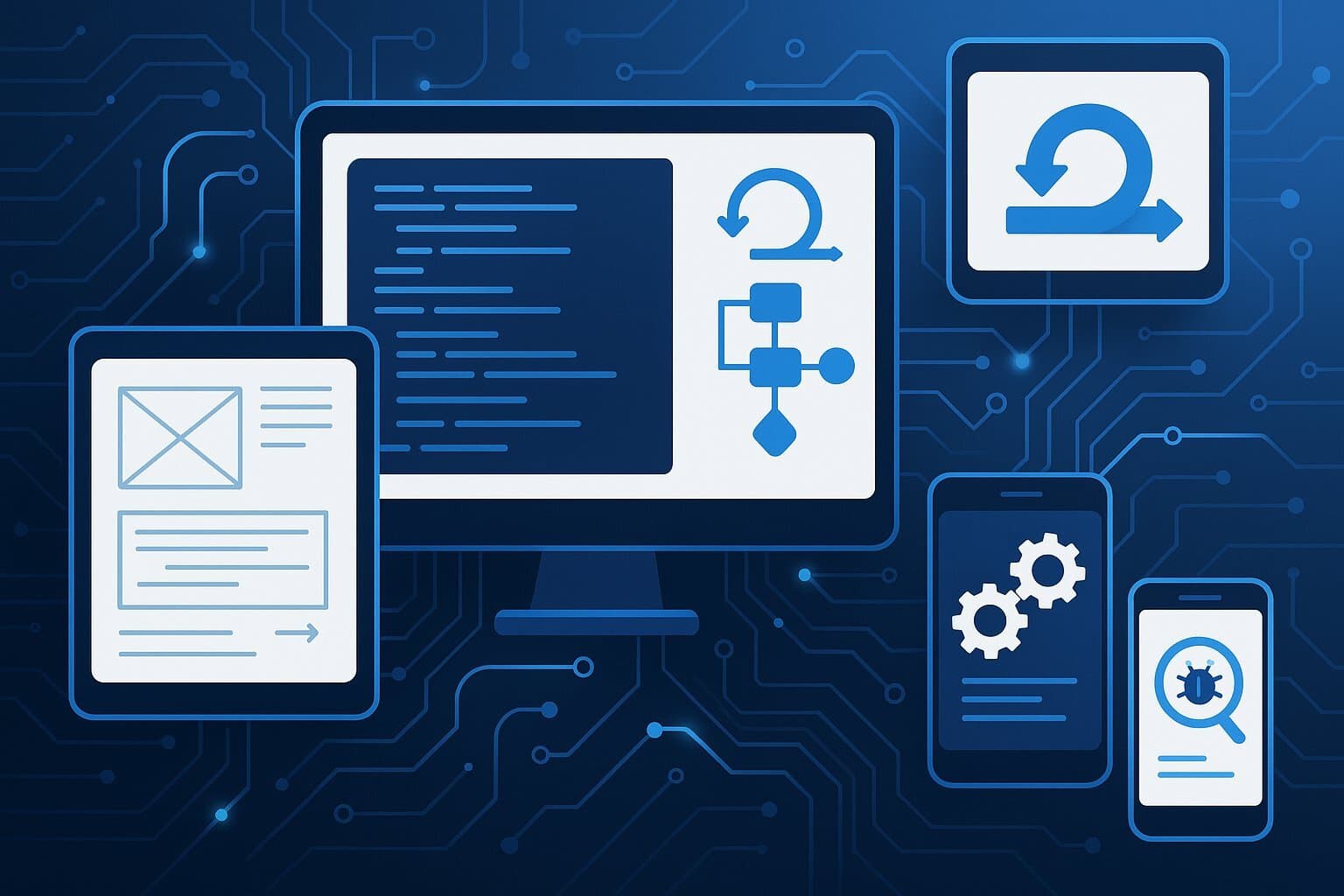
Software development is the process of creating and maintaining the various components of software, including applications and frameworks. This process takes the software from its original conception as an idea to its final manifestation, usually in a planned, structure manner. Software development may include many specific activities such as gathering requirements, prototyping, modification, testing and maintenance. Software is often developed separately from hardware and other applications, as occurs with system software. However, the development of embedded software such as that used to control consumer products, involves integrating the development of the software with that of the associated product.
Read MoreBy: Bryan Reynolds | 01 August, 2024

An organization that needs new software should first determine whether an existing solution or a custom solution will provide the best value. If it chooses to develop its own software, the next major decision is often choosing between onshore and offshore developers. This process requires careful consideration of many factors, including development time and costs. Other critical factors for selecting a software developer include differences in communication style, culture and time zones.
Read MoreBy: Bryan Reynolds | 18 July, 2024
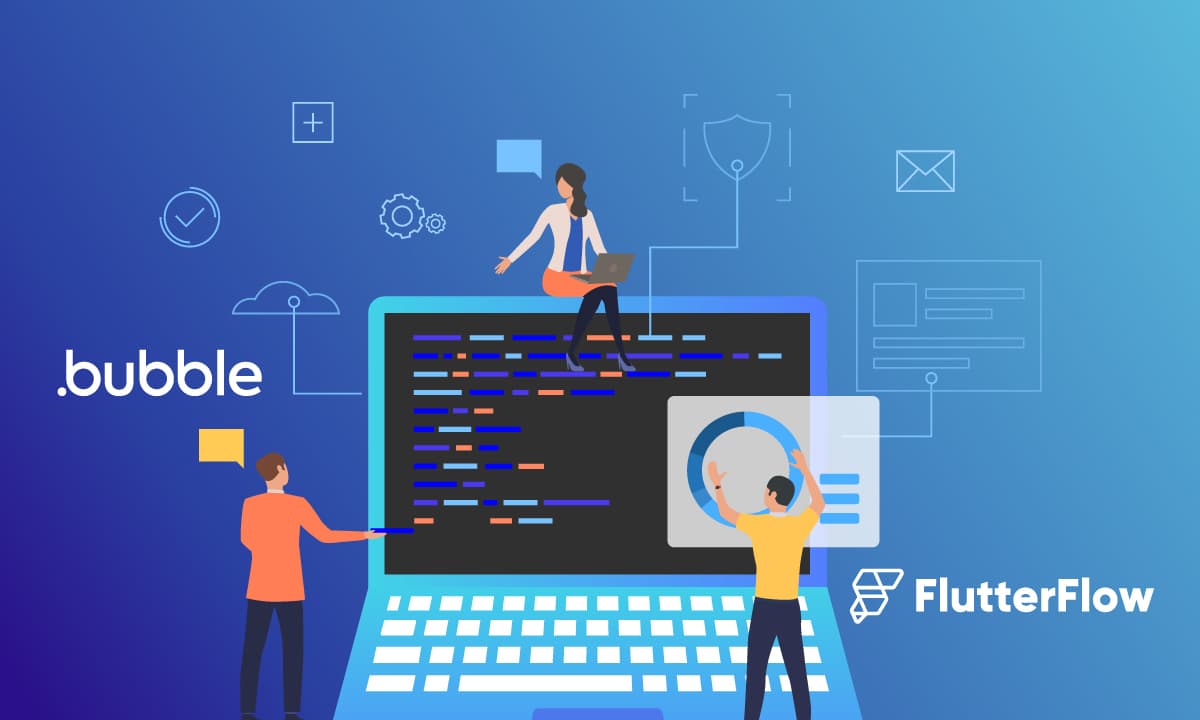
The use of low-code/no-code (LCNC) platforms like Bubble and FlutterFlow is revolutionizing software development by enabling businesses to create custom applications more efficiently and without requiring specialized programming skills. This article compares Bubble and FlutterFlow, discussing their key features, pros and cons, ideal use cases, integration capabilities, community support, pricing plans, and real-world examples to help businesses make informed decisions when choosing an LCNC platform.
Read MoreBy: Katarina Rudela | 29 November, 2022

All modern businesses use software to some extent, even when it isn’t a core component of their operations. However, the importance of software generally increases as a company grows, often reaching a critical point when commercial off-the-shelf (COTS) is no longer adequate. In these cases, a business may need to invest in developing software to fill gaps in its current capabilities, whether it’s to add new features or fix existing ones.
Read MoreBy: Katarina Rudela | 04 October, 2022

Software development is evolving rapidly, with rapid innovation being a dominant trend. The increasing rate of technological advances and market competition have combined to create an environment in which adapting quickly to change is essential for survival. In particular, prototyping has become the standard approach to software development for many developers, although other methods still exist. Prototyping is especially helpful for applications where user requirements change during development.
Read MoreBy: Bryan Reynolds | 08 September, 2022

Modern businesses frequently find they need new software to remain competitive, especially in crowded markets driven by rapidly advancing technology. The decision to implement software often comes down to a choice between custom and commercial-off-the-shelf software. Custom software has a higher up-front cost, but its maintenance costs are often lower since it probably won’t require as many changes going forward. Organizations making this decision must also consider the longer implementation time of custom software.
Read MoreBy: Katarina Rudela | 28 June, 2022

Environment, health and safety (EHS) software is becoming more common due to the increasing importance of these issues. Many companies have now implemented this type of software, even those that don’t specialize in EHS. For those that do, tightening regulations and emerging technologies often mean that an organization benefits from custom-built EHS software. These solutions include a range of capabilities, depending on the user’s specific requirements.
Read MoreBy: Katarina Rudela | 08 February, 2022

There was a time not too long ago when any company needing an enterprise software application was required to build their own solution from the ground up. We've come a long way in recent years, though, with software-as-a-service (SaaS) applications making it increasingly easier for companies of all sizes to acquire the software solutions they need without being required to build those solutions themselves. Perhaps the most significant advance in the world of custom software development, though, is the rapidly rising popularity of low code/ no code development.
Read MoreBy: Katarina Rudela | 05 January, 2022

Our latest post covers trends in software development for 2022. The rapid rate of change makes it more challenging to predict trends in this space than other sectors, especially when you consider the changes that occurred this year. However, some basic tendencies will serve as the basis of change for the next year. These trends derive from both technological advances and socioeconomic changes, many of which are the result of the COVID-19 pandemic that began sweeping the globe in 2020. Some of the most significant software development trends to watch for in 2022 include cloud technology and big data security.
Read MoreBy: Bryan Reynolds | 09 August, 2021
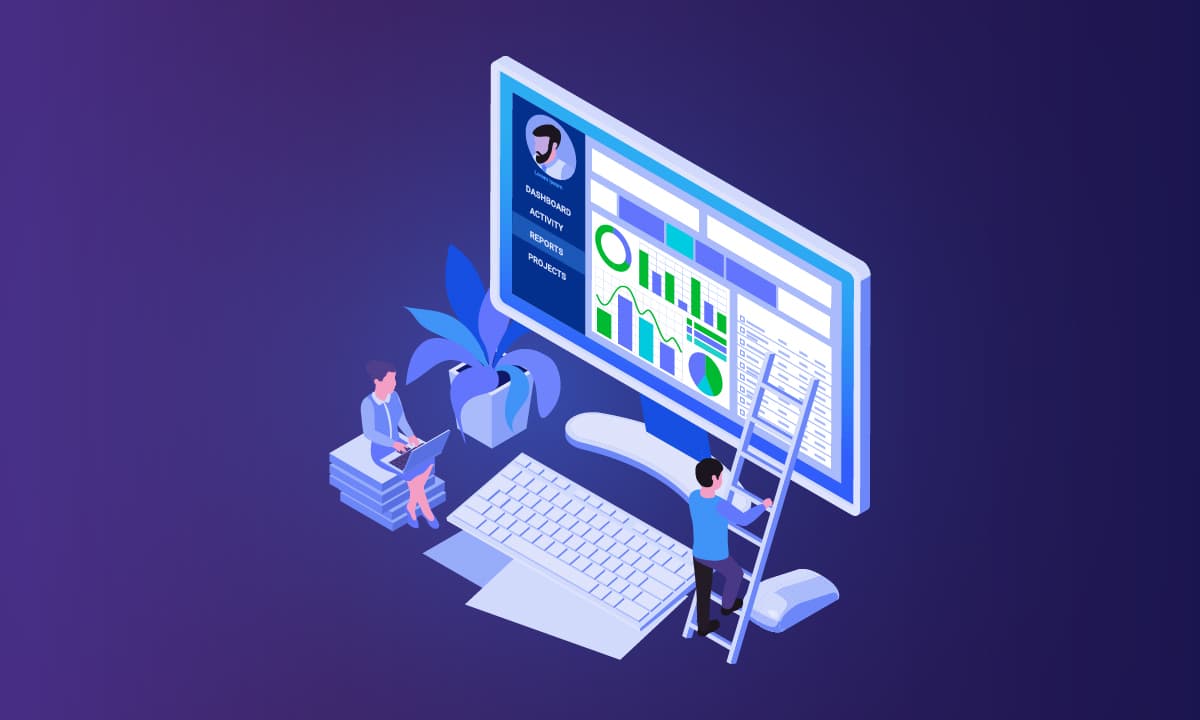
This article describes the differences between custom software and off-the-shelf software, primarily for the purpose of an organization selecting their software acquisition path. Understanding the differences between custom and commercial off-the-shelf software (COTS) is the first step in deciding on the option that meets your organization’s software requirement. The distinction between these two types is becoming blurred as today’s businesses continue to combine the two types with increasing frequency.
Read MoreBy: Bryan Reynolds | 31 March, 2020

A web application framework (WAF), also known as a web framework (WF), supports the development of web applications, which includes web application programming interfaces (APIs), web resources, and web services. Web application frameworks standardize the approaches developers use to build and implement web applications, largely by automating everyday tasks. For example, they often include libraries of routines that perform tasks like database access, session management, and creating framework templates. This routine helps promote the reuse of code, which reduces development time.
Read More

